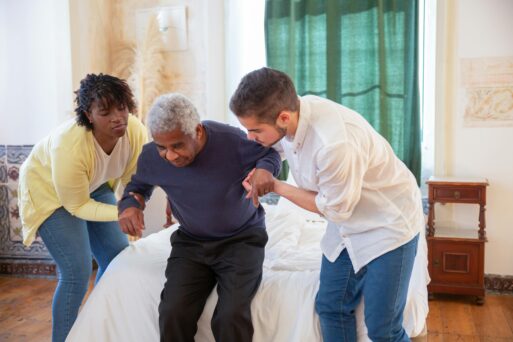
New research aims to keep people on the best path for care in their final years.
Credit: Ray Fragapane
A recent Rutgers Health study could lay the foundation for improvements in end-of-life care by identifying the nine paths that most Americans follow in the last three years of their lives.
“Our study not only identifies different patterns of care but also sheds light on the clinical and policy factors that dictate where and when patients receive care,” said Haiqun Lin, lead author of the study and a professor of biostatistics, who is also director of the new Center for Health Equity and Systems Research at Rutgers School of Nursing.
“Understanding these patterns is crucial for advance care planning, and ultimately, for achieving the triple aim of improving care experiences, reducing care costs, and improving care quality,” Lin said.
Analysis Finds Three Major Care Clusters
Published in January 2024 in BMC Geriatrics, the team’s findings were based on three years of clinical records drawn from a randomly selected 10% of all 2 million Medicare beneficiaries who died in 2018. Analysis of how much personal care each patient received and where they received care revealed three majorcare clusters – home, skilled home care and institutional care.
Within each of the three clusters, researchers further segmented care into three trajectories, based on the amount of skilled or institutional care that was required as the patient approached death.

Most Americans who need assistance in their final years will receive it at home.
Credit: Kampus Production
Nearly 60% of patients fell into the “home” cluster, spending most of their last three years at home, where friends and family helped them with tasks they couldn’t perform for themselves. In most cases, these patients received little professional care until the last year of their life.
Another 27% fell into the “skilled home care” cluster, where nurses and other skilled professionals helped friends and family care for them inside their own homes for most of their final three years.
Fourteen percent of patients landed in the “institutional care” cluster, spending most of their final three years either in hospitals or, more often, nursing homes, solely cared for by paid professionals.

Women require institutionalized care more often than men, according to the study.
Study Reveals Sociodemographic Trends
The researchers used a group-based trajectory modeling approach that examined sociodemographic and health-related metrics. Patients in both the skilled home care and institutional care clusters were more likely than patients in the home cluster to be female, Black, enrolled in Medicaid or suffering from dementia. Extensive use of skilled home care was more prevalent in Southern states, while extensive use of institutional care was more common in Midwestern states.
The study is the first of several the researchers plan that is based on their analysis of the Medicare data. Now that they have identified the trajectories that people actually follow in their last years of life, they will look for the key factors that direct people down each path and interventions that will help more people stick to the path they prefer.
For most people, that means one of the paths in the home cluster.
“Most people want to stay at home with minimal professional help,” said Olga Jarrín, corresponding author of the study and the Hunterdon Professor of Nursing Research at Rutgers School of Nursing. “However, the goal for a significant minority of people is to avoid burdening family and friends, and such people tend to want professional care.”
Bottom line, according to Jarrín: “Our goal isnʼt forcing people toward any particular type of care, it’s helping them to plan for and get the care thatʼs right for them.”

 Rutgers Health Study May Improve End-of-Life Care
Rutgers Health Study May Improve End-of-Life Care


 Our Annual Seven Holiday Gifts for Someone Who Is Grieving, 2024 Edition
Our Annual Seven Holiday Gifts for Someone Who Is Grieving, 2024 Edition
 “Making Mobiles” by Karolina Merska
“Making Mobiles” by Karolina Merska
 “Hands Up to the Sky” by Michael Franti & Spearhead
“Hands Up to the Sky” by Michael Franti & Spearhead














